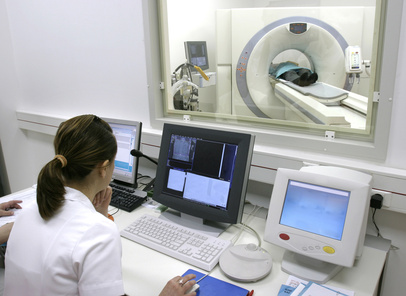In this large international multicenter population, computed-tomography (CT)-derived fractional flow reserve (FFR) modified treatment recommendation in two-thirds of subjects compared with CT angiography alone, and it was associated with less negative invasive angiographies. It also predicted revascularization and identified low-risk patients.
 A non-invasive means to know the anatomy and function of patients with stable chronic angina might decrease the number of invasive angiographies (mainly those whose final result are normal coronary arteries).
A non-invasive means to know the anatomy and function of patients with stable chronic angina might decrease the number of invasive angiographies (mainly those whose final result are normal coronary arteries).
ADVANCE is a large prospective multicenter registry assessing coronary computerized tomography angiography and CT-derived fractional flow reserve (FFRCT) in real-world patients. Its aim was to determine the impact of this diagnostic pathway on decision-making, downstream need for invasive coronary angiography, revascularization, and major cardiovascular events.
Read also: Cautious Administration of Supplemental 02, Especially in Acute Stroke or MI.
A total of 5083 patients with symptoms compatible with chronic ischemic heart disease and atherosclerosis on conventional CT angiography were enrolled at 38 international sites from 2015 to 2017.
The primary endpoint was reclassification between core lab decisions based on angiography alone vs. angiography plus FFRCT.
With information from FFRCT, the initial decision changed through reclassification in 66.9% of patients.
Read also: Safety of Combining New Anticoagulant Agents and Dual Antiplatelet Therapy.
Non-significant coronary disease appeared in conventional invasive angiography in only 14.4% of patients with FFRCT ≤0.8 compared with 43.8% of patients with FFRCT ≥0.8 (p < 0.0001).
Ultimately, 72.3% of patients who underwent a conventional invasive coronary angiography due to FFRCT ≤0.8 underwent revascularization.
No death or infarction occurred within 90 days in patients with FFRCT >0.8.
Read also: Surprises in the Physiopathology of Critical Ischemia.
Ten years ago, computerized tomography angiography threatened to replace conventional invasive angiography (experts predicted that the cath lab would only be used for angioplasties).
During these 10 years, invasive functional assessment of lesions (through FFR and instantaneous wave-free ratio [iFR]) became the gold standard and tomography would not be left behind; that is how FFRCT was born. Again, tomography experts promise that, in 10 years, invasive coronary angiographies will no longer be necessary. The answer will probably be related with FFRCT software and equipment costs; however, there will undoubtedly come a time when tomography replaces diagnostic studies.
Original title: Real-World Clinical Utility and Impact on Clinical Decision-Making of Coronary Computed Tomography Angiography-Derived Fractional Flow Reserve: Lessons from the ADVANCE Registry.
Reference: Timothy A. Fairbairn et al. European Heart Journal (2018) 39, 3701-3711.
Get the latest scientific articles on interventional cardiologySubscribe to our weekly newsletter
We are interested in your opinion. Please, leave your comments, thoughts, questions, etc., below. They will be most welcome.





